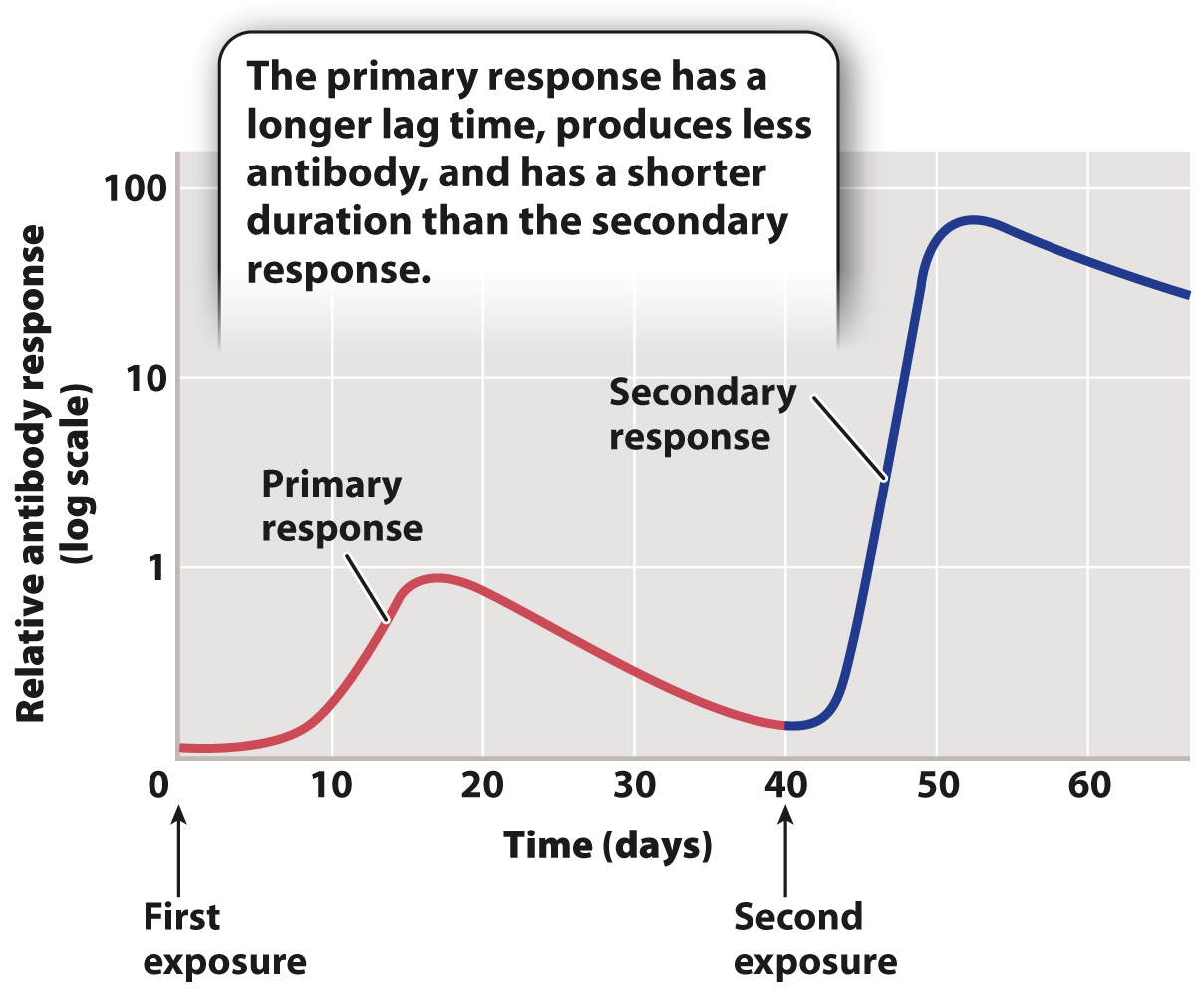Clonal selection also explains immunological memory.
Clonal selection explains antibody specificity. It also explains the second feature of the adaptive immune system: the ability to remember past infections—

On re-
The presence of long-
Vaccination was discovered by a combination of observation and experiment. Until the early 1700s, it was common practice to inoculate people with smallpox to induce a mild disease and prevent a more severe, even lethal, infection. It was also well known that milkmaids, exposed to the relatively benign cowpox virus from milking cows, were immune to the related but more deadly smallpox virus. In 1796, the English scientist Edward Jenner specifically tested the consequences of exposure to cowpox by inoculating a young boy with cowpox and demonstrating that he became immune to smallpox. In fact, the word “vaccine” is derived from the Latin vacca, which means “cow.”
Today, vaccines take many forms: They can be a protein or a part of a protein from the pathogen, a live but weakened form of the pathogen, or a killed pathogen. They are among the most effective public health measures ever developed.
Quick Check 2 Look again at Fig. 43.12. Imagine that a different novel antigen is added on day 40 rather than a second injection of the same antigen. Would you predict that there would be a primary or a secondary response to this second antigen?
Quick Check 2 Answer
A second novel antigen injected on day 40 will produce a primary response, not a secondary response, because it is a novel antigen that has not been encountered before by the immune system.